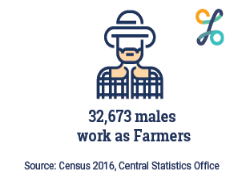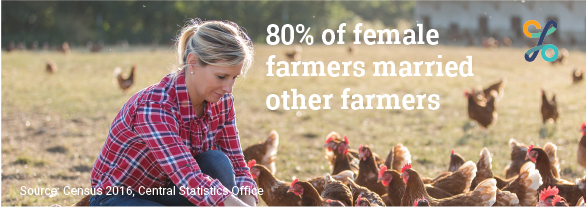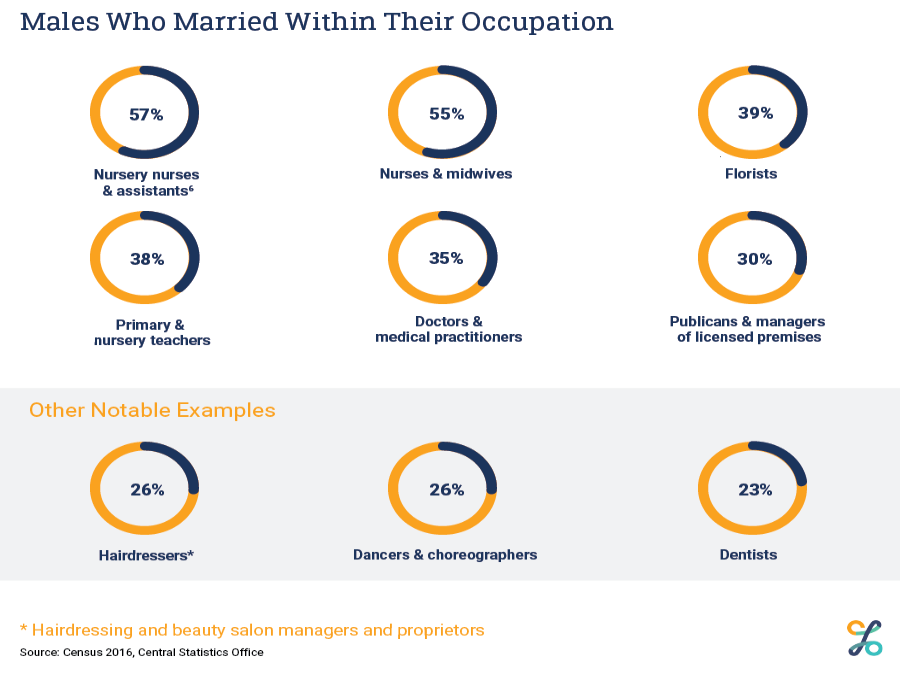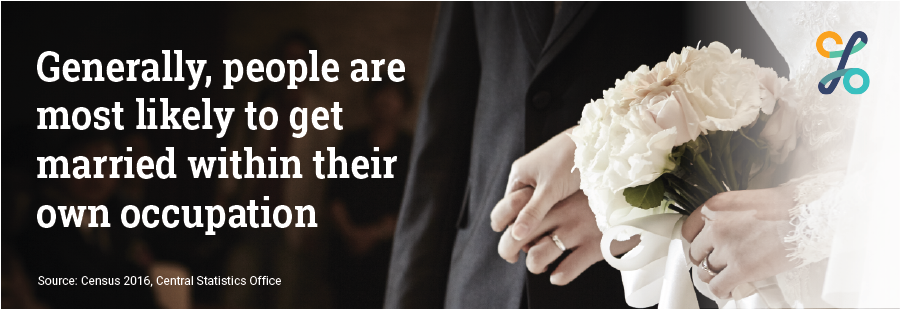
We have all heard anecdotally how people often marry within their own occupation, and with the wedding season upon us, we looked through the Census 2016 data to spot the trends of who marries whom. Here are the highlights of what we found in the data when we cross-referenced spouses and occupations. It turns out the chances of marrying someone from your own occupation are quite high.



For women, the top occupations with the highest percentage who married within their own field are outlined below. We can clearly see that women who list their occupation as Farmers were very likely to be married to male Farmers. Female Publicans1, Taxi Drivers2 and Gardaí3 were also very likely to be married to their male counterparts.

We have also looked at each sex and the highest percentage who married outside their occupation. We can see from the data below that marriages to Farmers dominated.
It is no surprise that females marrying Farmers was very common as Farmers were the largest single male occupation in the country (32,673). This was followed by Lorry drivers (11,441), Managers and directors in manufacturing (10,582) and Carpenters and joiners (10,558). Managers and directors in retail and wholesale numbered 10,248, followed by Construction workers (9,819) and Sales accounts and business development managers (9,486). Gardaí accounted for 8,113 of the workforce followed by Chartered accountants and taxation experts (8,011). The last occupation in the Top 10 male occupations by numbers employed were Business sales executives (7,976).


For men, the top occupations with the highest percentage who married within their own field are outlined below.
We can clearly see that men who list their occupation as Nursery nurses and assistants6 were very likely to be married to females of the same occupation. Male Nurses and Doctors7 were also very likely to be married to female Nurses and Doctors.
It should be noted that the top figures can be skewed due to low numbers employed in certain occupations. For example, while 39% of male Florists married female Florists, there were only 36 married male Florists in the 2016 Census.

Overall, the number of males marrying Nurses was very common. Nurses and midwives were the largest single female occupation in the country (38,518), followed by Sales and retail assistants (31,628), Other administrative occupations (26,116), Primary and nursery teachers (23,642) and Personal assistants and secretaries (20,199). Care workers accounted for 19,157 females in the workforce followed by Secondary education teachers (15,312), National government administration (12,300) and Cleaners (12,257). The final occupation for females in the Top 10 female occupations by numbers employed were that of Book-keepers and payroll managers (12,072).
We looked at the top occupations for each sex and the highest percentage that married outside their occupation. We can see from the data that marriages to Nurses dominate.

Generally, people are most likely to get married within their own occupation. However, the analysis indicated that people are also likely to marry people in other occupations that they work closely with, or where they may share similar working hours.
Note:
All data is anonymised and unidentifiable.
We omitted the data on civil same-sex partnerships and same-sex marriages recorded in Census 2016, as we could not provide this level of analysis on them due to the relatively smaller numbers.
Glossary
1Publicans = Publicans and managers of licensed premises
2Taxi drivers = Taxi and cab drivers and chauffeurs
3Gardaí = Police Officers (Sergeant and below)
4Nurses = Nurses and midwives
5Lorry drivers = Large goods vehicle drivers
6Nursery nurses and assistants = Nursery nurses and assistants and playworkers
7Doctors = Doctors and medical practitioners
Source: CSO Census 2016